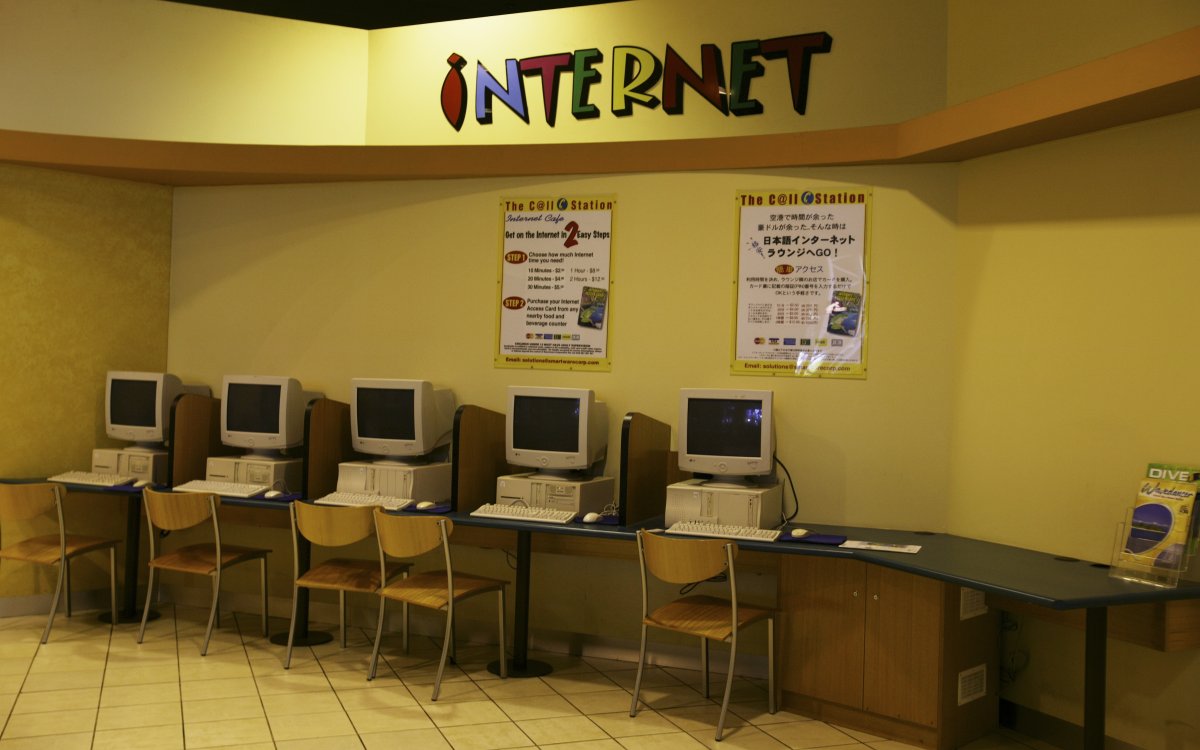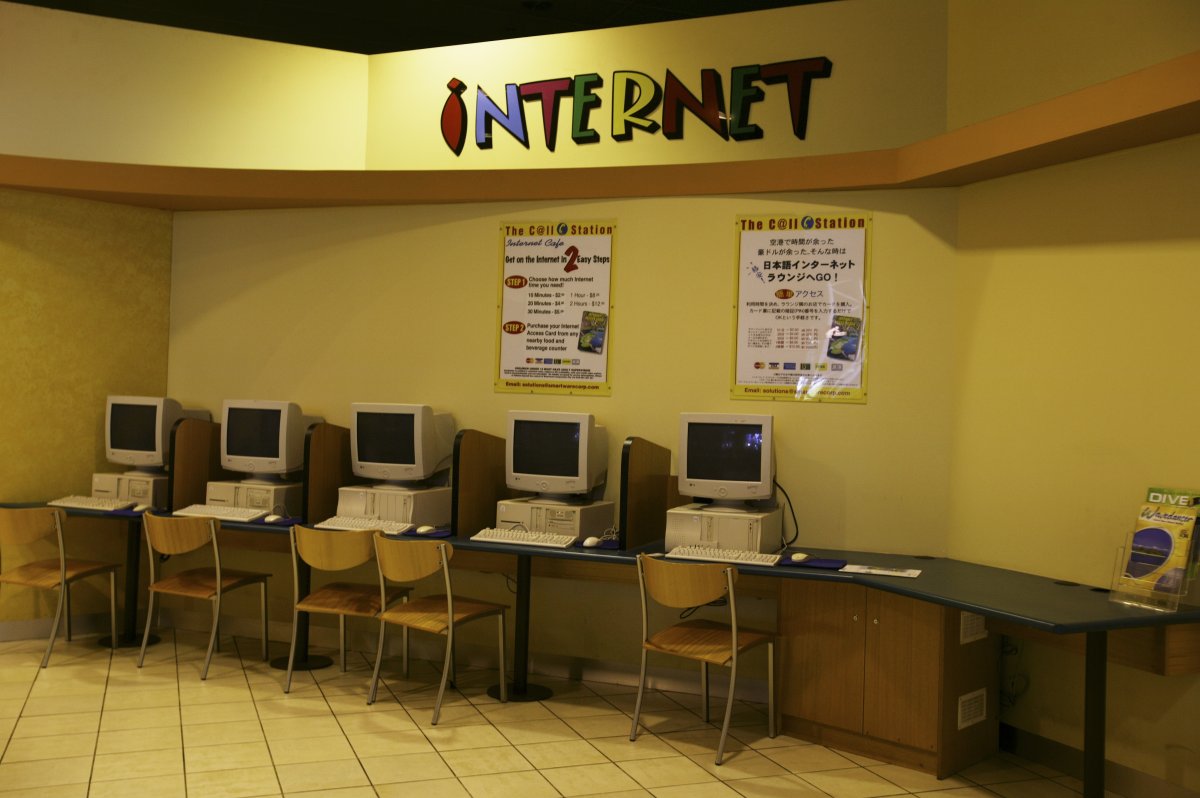Information is all around us, every day. Regardless of whether we are looking for the information or having it presented to us unexpectedly, it is easy to become overwhelmed by the amount of data we are exposed to. Consciously or subconsciously, we take in or dismiss information: the information may or may not interest us, it may or may not be relevant to the task we’re working on, we may or may not like the program/author/publisher or the way the information is presented – we constantly make judgements on the information we engage with.
Having good media, information and digital literacy skills means being aware of the importance of making these judgement calls, knowing how to make them and taking control of the way we engage with information and the sources of information around us.

Sievers, Wolfgang, 1913-2007. (1966). Information desk at German stand, Exhibition Building, Melbourne, Victoria 1966 [picture] / Wolfgang Sievers. http://nla.gov.au/nla.obj-161478886
What is a source?
Anything can be a source – books, TV shows, newsletters, people – a source can be anything that is the origin of information.
Sources can be broken into three types based on where their information comes from. Some examples of different types of sources could include:
|
Primary |
Secondary |
Tertiary |
|
These sources are first-hand, original information or works |
One step removed from the primary information these sources often are interpretations or compilations of primary sources |
Indexed, collected, or organised lists or databases of information with little to no interpretation or additional information added. Provides directions to primary and secondary sources |
|
|
|
Once the type of source has been established, it is also important to assess if the source being used is reliable.
Michelle Ciulla Lipkin talks about where to start when critically engaging with media and identifying sources with students.
Where can I find sources and information?
Physical sources
Libraries are a great place to start if you are trying to find information in books, magazines, newspapers and other printed media. The main job of libraries is to collect and provide access to the information they hold. They are also usually free and will often have staff who can help you start your search.
The National Library of Australia collects items that tell the Australian story, including information created by Australians, in Australia and about Australia, its people and its culture. Under legal deposit provisions made as part of the Copyright Act (1968), the Library is charged with collecting all printed material published in Australia. As such, published materials in the Library’s collection have been acquired without value judgement and cover the spectrum of views, opinions and perspectives. With these resources, researchers can access information presented from multiple authors and standpoints. With large collections, libraries can also often provide access to primary sources or additional reference material to help make decisions about the accuracy of a source. An example of this can be seen in Interpreting the Collection – Art: The Death of Cook.
Digital sources

Seselja, Loui, 1948- & Crome, E. A. (Ernest Alfred), 1902-1987. (2005). Internet terminals, International Terminal, Cairns Airport, Cairns, Queensland, 18 June 2005 [picture] / Loui Seselja.
On the internet, search engine results from a keyword search can provide a collection of thousands of sources to investigate or explore further. When using the internet to find sources, it is important to exercise critical thinking when entering a website. Understanding domain prefixes and suffixes can give you some idea of the reliability of the information.
Domain names and suffixes denote different types of websites and authors:
- .au – An Australian website hosted on the Australian Web Domain
- .gov.au – An Australian Government Agency
- australia.gov.au – Official website of the Australian Government
- nla.gov.au – website of the National Library of Australia
- .org.au - a registered Australian organisation
- redcross.org.au – official site of the Red Cross organisation in Australia
- .edu.au – an accredited Australian educational institution or associated organisation
- acara.edu.au
Once a website has been entered, the information within can be appraised with the criteria in the following section “What is a trusted or credible source”.
The domain suffixes above are examples of Australian sites. Other countries employ their own geographic suffixes e.g.
- Natlib.govt.nz – Official website of the National Library of New Zealand
- Nationallibrary.gov.in – Official website of the National Library of India
- bl.uk – Official website of the British Library
- loc.gov – Official website of the Library of Congress in the United States of America
- note: many websites based in the United States of America do not use a geographic suffix.
The domain suffixes above are examples of Australian sites. Other countries employ their own geographic suffixes e.g.
- Natlib.govt.nz – Official website of the National Library of New Zealand
- Nationallibrary.gov.in – Official website of the National Library of India
- bl.uk – Official website of the British Library
- loc.gov – Official website of the Library of Congress in the United States of America
- note: many websites based in the United States of America do not use a geographic suffix.
What is a trusted or credible source?
A trusted or credible source is a source of information, regardless of whether it is primary, secondary or tertiary, that is known or has been proven to have or provide consistently reliable and accurate information.
There are many methods to determining the trustworthiness of a source. Below are some common considerations to think about when judging trustworthiness in a source:
- Authority:
- Who created this work?
- What are their qualifications in this field/subject?
- Does the creator have the experience and expertise to claim this information as truth?
- Have they published anything else on this subject?
- Is this source peer reviewed (reviewed and approved by other experts in this field)?
- Does the author(s) have the cultural authority or permission to write about or claim this information as truth?
- Currency:
- Is this information the most up to date I can find?
- When was this work written and/or published?
- Is this the most recent edition of this work?
- Are the sources cited within the work current?
- Is there anything in the work that indicate it may be out of date (language, dates, tense)?
- Accuracy:
- How accurate does this information seem?
- Are there any indications of hyperbole, exaggeration, generalisations, or impossibilities?
- Does the author cite the source of their information?
- Is there anything that does not seem right or that I know to be false?
- NOTE: Even quality sources may become inaccurate as they age and are superseded by new information and findings.
- Bias:
- Can I see any language or evidence that would indicate a bias in this information?
- Is there an excessive use of opinion that is not backed up by fact?
- Does it seem like there is anything missing from the facts that are given?
- Does the information presented show both sides of an argument before making a judgement?
- Are there any indications of sensationalism or persuasive language?
- Does it seem like the creator of this work is trying to make me think or do something?
- Does the work make critical judgements about a person or idea without facts?
- What do I know about the author/creator and their authority on this subject?
- What do I know about the publisher of this work? Do they have a history of only presenting certain types of information?
- Purpose:
- Why was this work created? What was the motivation? (can be multiple)
- Entertainment?
- Information sharing?
- Persuasion?
- Political gain?
- “Likes”/“hits”/clicks?
- Something else?
- How is the information presented? What kind of format(s) does it exist in?
- Who initiated this work? Was it the creator’s idea or was it commissioned/ordered by someone else?
- Who is the target audience of this work?
- What kind of language is being used (academic, plain language, industry specific)?
- Who benefits from people engaging with this work?
- Why was this work created? What was the motivation? (can be multiple)
It can be difficult to find answers to all the above. Readers must use their judgement to decide if they can rely on a source for information. Considering some or all of the questions above can help you decide.
A source can also be many things. Depending on the information or outcome the user wants, it can change in its reliability or appropriateness. For example, a government census from 1950 could be considered a trusted source to provide accurate information about a time and place in the past; however, it would not be a reliable or suitable source from which to get information about that location in the present time.
Activities
- Present students with a range of sources and give them a simple task or question as a reference point.
- Ask them to identify the sources provided and categorise them as primary, secondary or tertiary sources.
- Change the question or topic and ask them to re-evaluate using the five considerations above.
- Did the reliability of the source material change once the criteria were changed?
- Were there any issues or sources that were hard to evaluate?
- Ask students to consider what kinds of sources they have interacted with today? This week?
- Ask them to consider what they think about the sources and their reliability

